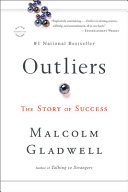
From "Outliers the Story of Success"
The Intricate and Labor-Intensive Nature of Wet-Rice Agriculture and its Cultural Legacy
Key Economic Insight
Wet-rice agriculture is an exceptionally intricate and demanding form of farming, originating in China thousands of years ago and spreading throughout East Asia. Rice paddies are not simply opened fields but are meticulously 'built,' often carved into mountainsides as terraces or constructed from marshland. This process necessitates complex irrigation systems including dikes, channels, and gates for precise water flow, as well as carefully engineered hard clay floors topped with a thick, soft mud layer for planting. Farmers must repeatedly fertilize with various materials like 'night soil,' burned compost, river mud, bean cake, and hemp, while carefully managing quantities and timing. They choose from hundreds of rice varieties, balancing factors like yield, growth speed, drought resistance, and soil performance, often planting multiple types simultaneously to mitigate crop failure risks.
The agriculture is 'skill oriented,' contrasting with the 'mechanically' oriented Western farming where efficiency comes from equipment and increased acreage. Asian rice farms are tiny, with typical paddies the size of a hotel room, and families of 5 or 6 subsisting on only a few paddies. Improving yields relies on farmer's intelligence, time management, and meticulous choices, such as diligent weeding, adept fertilizing, careful water level monitoring, and precise claypan leveling. This makes rice farming ten to twenty times more labor-intensive than corn or wheat farming, with wet-rice farmers historically working an estimated 3000 hours annually, significantly more than hunter-gatherers (1000 hours/year) or 18th-century European peasants (1200 hours/year) who experienced long periods of idleness.
Despite its intensity, rice farming provided meaningful work due to a clear link between effort and reward, its inherent complexity, and the autonomy it afforded. Unlike the repressive feudal systems in Europe, the intricate nature of rice cultivation in China and Japan fostered fixed-rent systems by the 14th and 15th centuries, where landlords collected a set amount, incentivizing farmers by allowing them to keep additional harvest. This required farmers' active care and decision-making, as evidenced by Chinese proverbs emphasizing hard work, shrewd planning, and self-reliance, like 'No food without blood and sweat' and 'No one who can rise before dawn three hundred sixty days a year fails to make his family rich.' This cultural legacy of persistence and diligence, shaped by centuries of rice cultivation, has profoundly influenced Asian societies.
📚 Continue Your Economic Learning Journey
Access the complete Outliers the Story of Success summary with audio narration, key takeaways, and actionable insights from Malcolm Gladwell.